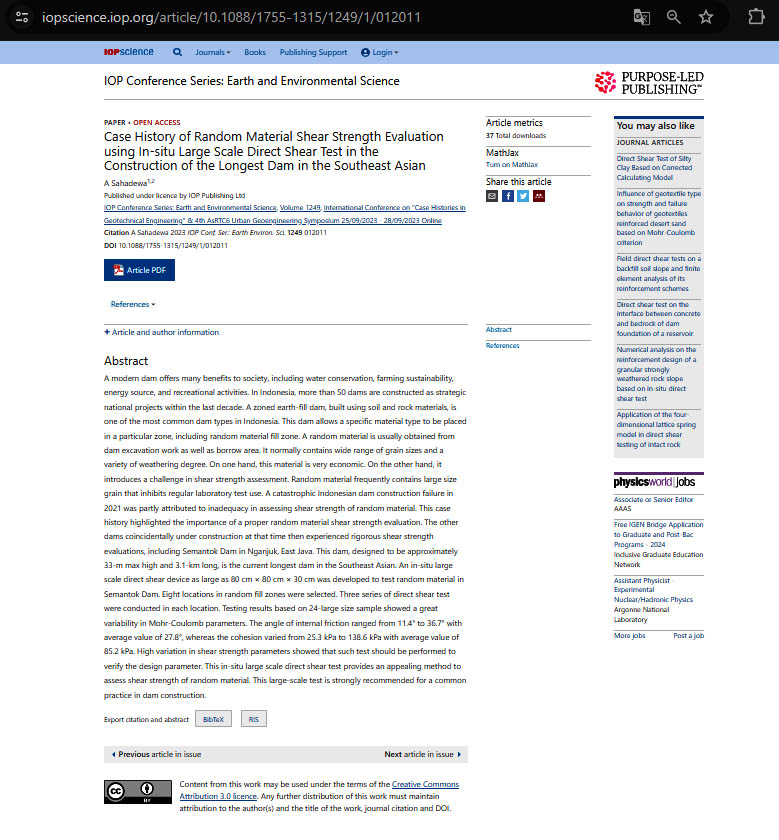

Andhika Sahadewa
A modern dam offers many benefits to society, including water conservation, farming sustainability, energy source, and recreational activities. In Indonesia, more than 50 dams are constructed as strategic national projects within the last decade. A zoned earth-fill dam, built using soil and rock materials, is one of the most common dam types in Indonesia. This dam allows a specific material type to be placed in a particular zone, including random material fill zone. A random material is usually obtained from dam excavation work as well as borrow area. It normally contains wide range of grain sizes and a variety of weathering degree. On one hand, this material is very economic. On the other hand, it introduces a challenge in shear strength assessment. Random material frequently contains large size grain that inhibits regular laboratory test use. A catastrophic Indonesian dam construction failure in 2021 was partly attributed to inadequacy in assessing shear strength of random material. This case history highlighted the importance of a proper random material shear strength evaluation. The other dams coincidentally under construction at that time then experienced rigorous shear strength evaluations, including Semantok Dam in Nganjuk, East Java. This dam, designed to be approximately 33-m max high and 3.1-km long, is the current longest dam in the Southeast Asian. An in-situ large scale direct shear device as large as 80 cm x 80 cm x 30 cm was developed to test random material in Semantok Dam. Eight locations in random fill zones were selected. Three series of direct shear test were conducted in each location. Testing results based on 24-large size sample showed a great variability in Mohr-Coulomb parameters. The angle of internal friction ranged from 11.4° to 36.7° with average value of 27.8°, whereas the cohesion varied from 25.3 kPa to 138.6 kPa with average value of 85.2 kPa. High variation in shear strength parameters showed that such test should be performed to verify the design parameter. This in-situ large scale direct shear test provides an appealing method to assess shear strength of random material. This large-scale test is strongly recommended for a common practice in dam construction.
Aplikasi uji geser langsung di lapangan untuk material random
Aplikasi metode pengujian kekuatan geser material random untuk menunjang proyek bendungan nasional.